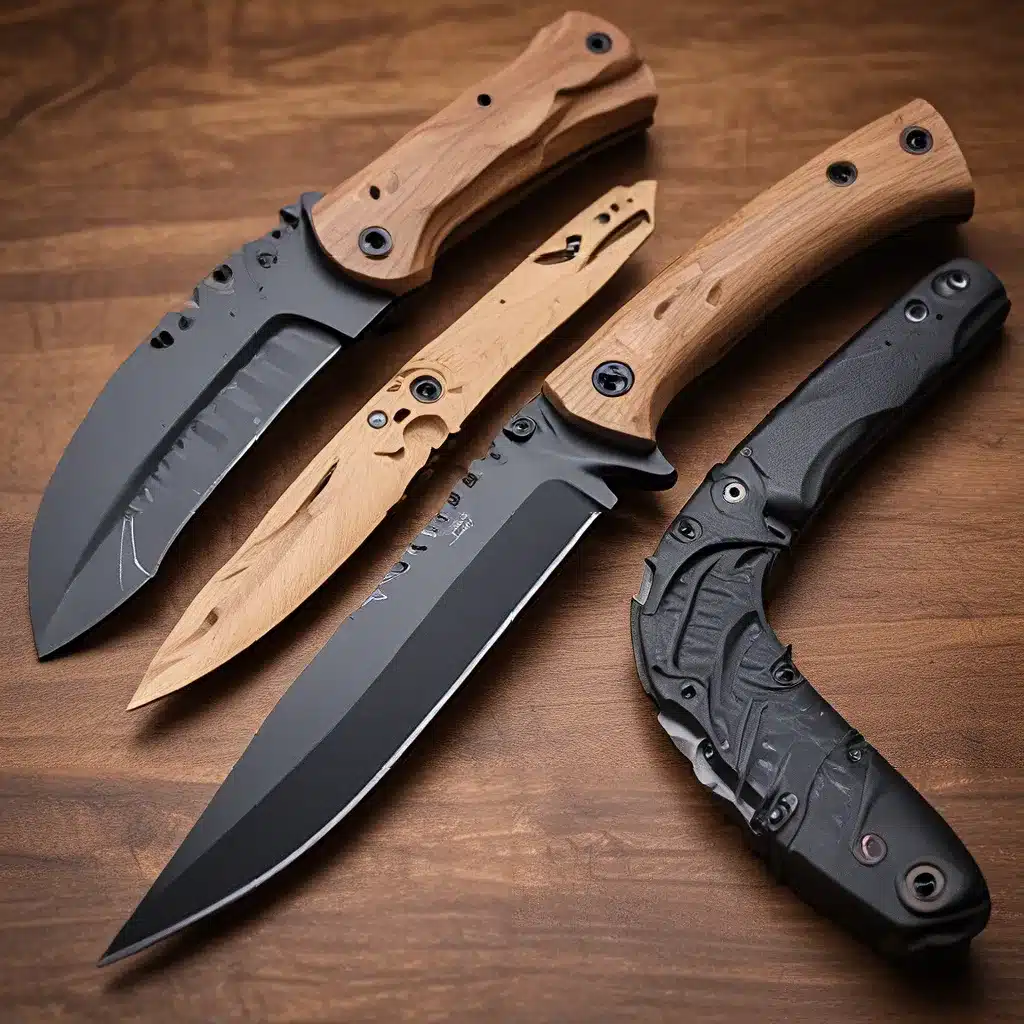
As a self-proclaimed knife nerd, I’ve always been fascinated by the evolution of knife steel and design. But every now and then, a true breakthrough comes along that shakes up the entire industry. And let me tell you, friends, we’re living in one of those times.
The Journey to CPM-MagnaCut
It all started back when I was a teenager, drooling over the latest developments in knife steel technology. I remember the day S30V was released, and how it was touted as this revolutionary new blade material. I just had to know more. So I started reaching out to the metallurgists at Crucible, picking their brains, and asking a million questions.
Little did I know, that curiosity would eventually lead me down a path of my own steel development. You see, after years of researching and writing about various knife steels, I started to have these little epiphanies about untapped possibilities in steel design. I just couldn’t shake the feeling that there was still room for improvement, especially when it came to balancing toughness, edge retention, and corrosion resistance.
Eliminating Chromium Carbides
The key breakthrough came when I started looking at the role of chromium carbides in stainless steels. See, most powder metallurgy (PM) stainless steels use high amounts of chromium, around 17-20%, for corrosion resistance. But that high chromium content also leads to the formation of large, coarse chromium carbides, which reduce toughness.
I wondered, what if we could find a way to minimize those chromium carbides? Would it be possible to get the corrosion resistance we need with less chromium? After playing around with the numbers in Thermo-Calc, it seemed like it just might work.
The trick was to carefully balance the carbon and chromium content, keeping the chromium low enough to avoid those problematic carbides, but high enough to still provide good corrosion resistance. Add in some strategic nitrogen and niobium additions, and suddenly, I had a steel composition that looked promising.
Turning Theory into Reality
Of course, the hard part was convincing a steel company to actually produce this experimental steel. I mean, who was I, some random knife nerd, to waltz in with a new steel design? But I decided to give it a shot anyway.
I put together a presentation outlining my ideas and reached out to the team at Crucible Industries. To my surprise, they were intrigued! With the help of my friend Bob at Niagara Specialty Metals, I was able to get the ball rolling. After what felt like an eternity of sleepless nights and anxious waiting, the first heat of CPM-MagnaCut was finally produced.
Introducing CPM-MagnaCut
The name MagnaCut was a nod to the history of steel development, harking back to the Vanadium Alloys Steel Company (VASCO) and their legendary high-speed steels like M42. I wanted to create a steel that lived up to that legacy of greatness.
And based on the testing I’ve done, as well as the feedback from the knifemakers I’ve collaborated with, I think we’ve achieved something truly special. CPM-MagnaCut combines the best attributes of non-stainless PM steels like CPM-4V and CPM-CruWear, with the added benefit of excellent corrosion resistance.
Microstructure and Heat Treatment
One of the key features of MagnaCut is its fine, uniform carbide structure. By minimizing those troublesome chromium carbides, we end up with a microstructure that’s dominated by smaller, harder vanadium and niobium carbides. This gives us the optimal balance of wear resistance and toughness.
As for heat treatment, the recommended process is a 2050°F austenitize, followed by a 350°F temper. This results in a hardness range of 61-62.5 HRC, with excellent toughness to boot. And if you really want to push the hardness, a cryogenic treatment can take it up to around 64 HRC.
Unparalleled Properties
The performance of MagnaCut is truly impressive. In my testing, it matched the toughness of steels like CPM-4V and Vanadis 4 Extra, while also delivering far superior corrosion resistance. In fact, it outperformed even high-end stainless steels like 20CV and S45VN in my saltwater immersion tests.
Knifemakers who have used MagnaCut have reported excellent edge retention, with Phil Wilson’s rope cutting tests showing it outperforming S30V and S90V. And when it comes to grindability and finishability, the feedback has been overwhelmingly positive, with the steel described as “easy to grind” and “responsive to stropping.”
A New Era of Knife Steel
I have to admit, I’m incredibly proud of what we’ve accomplished with CPM-MagnaCut. This steel represents a true breakthrough in the world of knife steels, offering an unparalleled combination of properties that I believe will change the game.
Of course, as with any new development, the proof is in the pudding. I’m excited to see how MagnaCut performs in the hands of knifemakers and end-users alike. And who knows, maybe this is just the beginning of a whole new era of innovative knife steel design.
If you’re as passionate about knives and steel as I am, I’d encourage you to keep an eye on Herman Knives for the latest updates on MagnaCut and other cutting-edge developments. This is going to be one wild ride, and I can’t wait to see what the future holds.


